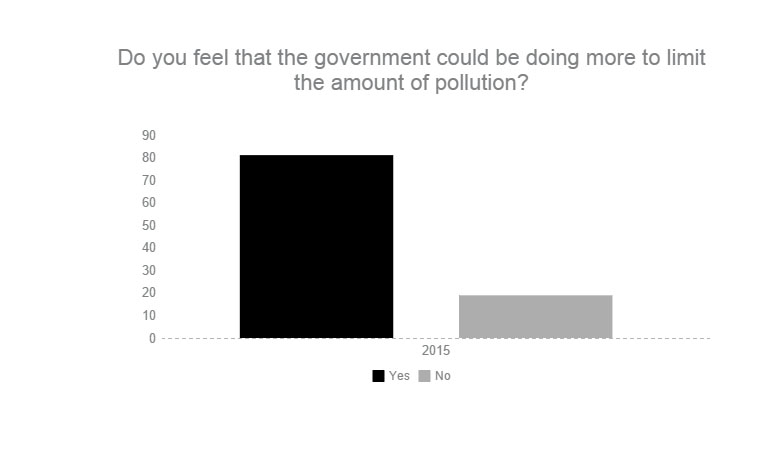Students Respond to U.N. Climate Change Agreement
Infographic by Thomas Atkinson
Eighty-one percent of 100 CHS students and faculty believe the government should be doing more to limit the amount of pollution in the U.S.
January 11, 2016
From Nov. 30 to Dec. 11, world leaders gathered in Paris to discuss the impending climate change situation. The outcome was an agreement involving 55 countries to work to lower global temperatures and raise at least $100 billion dollars annually in order to help developing countries.
“I think that it is a great [plan] because anything that will make the earth heal for everyone will make a big difference in the long run,” sophomore Kyle Lao said.
According to the NASA website, climate change has been a major issue in the past few years with a loss of 287 billion metric tons of land ice per year, carbon dioxide levels up 401.58 parts per million, and global temperatures up 1.4 degrees Fahrenheit.
Many students believe that the U.S. government in particular should be doing more in order limit pollution.
“The government should be providing more incentives for corporations to use cleaner energy sources,” junior Maddie Goldberg said.
The state of Maryland has already been working on decreasing the amount of pollutants put into the atmosphere and becoming more environmentally-friendly.
According to the Maryland Climate Change website, the Greenhouse Gas Emissions Reduction Act was made a law in 2009 and ultimately demands that greenhouse gas emissions be reduced by 25 percent by 2020. The current greenhouse gas concentration in the air is estimated to be around 100 million metric tons.
In an Observer survey, 81 percent of students interviewed said that they think the government should be doing more to limit the amount of pollution, while 19 percent said that the government is doing enough.
According to Principal Joan Benz, CHS and MCPS as a whole conserve resources in many other ways besides recycling. When MCPS builds a new school, such as Bells Mill Elementary School and Cabin John Middle School, it is built to run partially on geothermal energy.
While CHS may want a more energy-efficient form of air conditioning, the system has been in place since the 1960s, so it cannot be changed without renovating the entire school.
“I would love to get student suggestions for other things we should do,” Benz said.
The general initiatives to use Chromebooks and Google Classroom was not only meant to allow students to gain technology skills, but to conserve paper, saving both money and trees. MCPS also uses a sewage system that saves water in toilets.
“As the student population increases, we are gradually going paperless over time,” Benz said.
However, when contrasted with other cities in Maryland, the general area of Rockville, MD is not very polluted.
According to Numbeo, a website that allows users to compare living conditions between countries and cities, Rockville is rated “very low” in terms of most aspects of pollution.
When compared to Tianjin, China, one of the most polluted cities in the world, air, garbage and light pollution levels in Rockville are at the level of zero, while pollution levels in Tiajin can reach levels of almost 90 percent.
However, the water pollution in Rockville reaches an astonishing level of 50 percent, only 25 percent under Tiajin.
In order to try and decrease pollution levels in the water, the Montgomery County Department of Environmental Protection has taken the step of prohibiting the sale of styrofoam for all businesses, effective January 2016.
According to Green4u.com, a website providing users with tips to stay green, styrofoam uses a chemical called ChloroFluoroCarbon (CFC) in its production. CFC was banned by the U.S. government in 1989, but while it may not be used in its production, many of its effects still remain in styrofoam cups. Styrofoam itself does not break down easily and releases chemicals when it gets wet, contaminating water that touches it.
While climate change may seem like a global issue, there are still ways CHS students can get involved locally.
“There are easy things that help protect the environment such as planting native plants and trees, picking up after your pets when walking them outside, to using reusable bags,” Watershed Outreach Planner Ana Arriaza said. “In addition, individuals can volunteer. There are several watershed groups in Montgomery County that are very active and are always looking for volunteers.”


